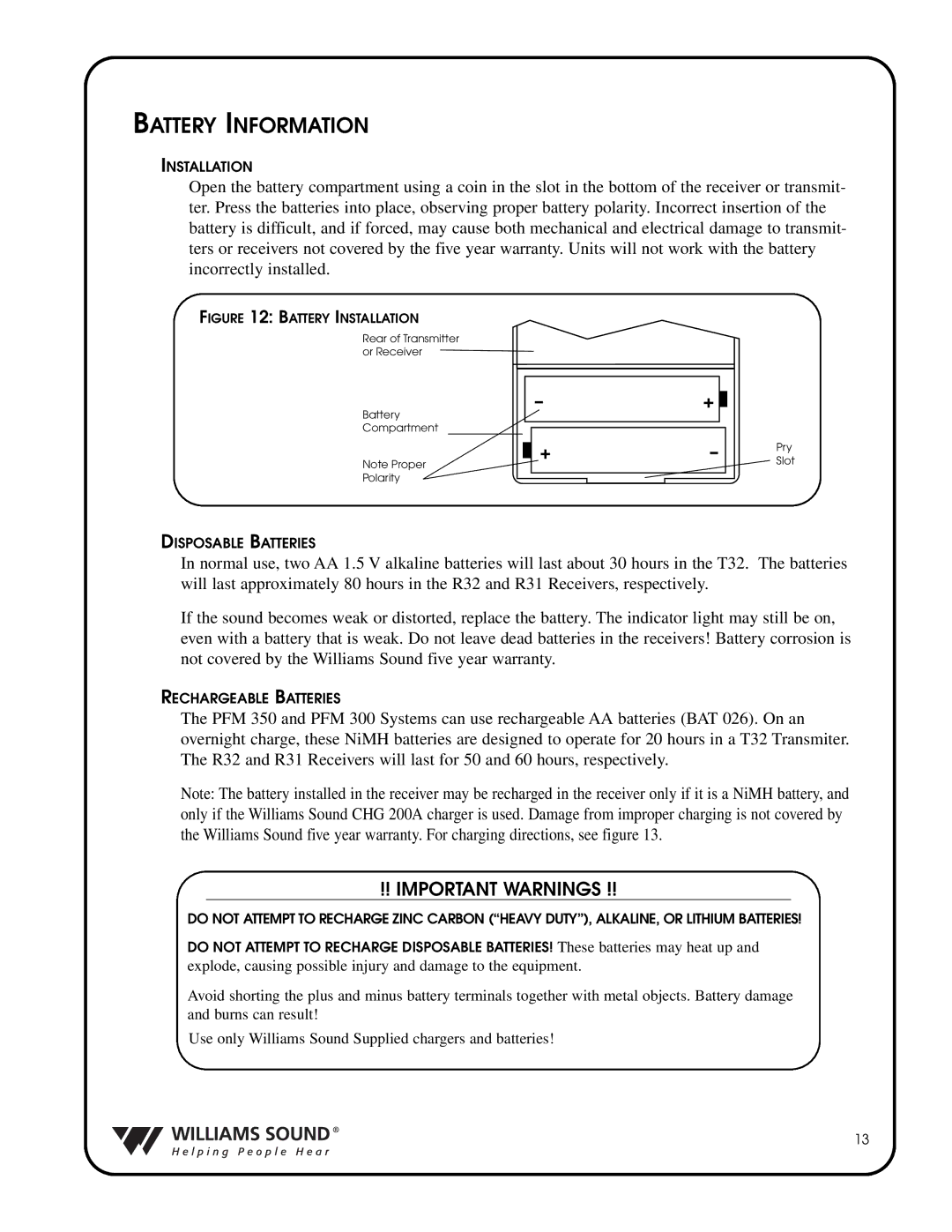
BATTERY INFORMATION
INSTALLATION
Open the battery compartment using a coin in the slot in the bottom of the receiver or transmit- ter. Press the batteries into place, observing proper battery polarity. Incorrect insertion of the battery is difficult, and if forced, may cause both mechanical and electrical damage to transmit- ters or receivers not covered by the five year warranty. Units will not work with the battery incorrectly installed.
FIGURE 12: BATTERY INSTALLATION
Rear of Transmitter or Receiver
Battery |
| – | + |
| ||
|
| |||||
| ||||||
|
|
|
| |||
Compartment |
|
|
|
| ||
| + | – |
| |||
|
|
|
| |||
|
| |||||
Note Proper | ||||||
|
|
| ||||
Polarity |
|
|
| |||
DISPOSABLE BATTERIES
Pry Slot
In normal use, two AA 1.5 V alkaline batteries will last about 30 hours in the T32. The batteries will last approximately 80 hours in the R32 and R31 Receivers, respectively.
If the sound becomes weak or distorted, replace the battery. The indicator light may still be on, even with a battery that is weak. Do not leave dead batteries in the receivers! Battery corrosion is not covered by the Williams Sound five year warranty.
RECHARGEABLE BATTERIES
The PFM 350 and PFM 300 Systems can use rechargeable AA batteries (BAT 026). On an overnight charge, these NiMH batteries are designed to operate for 20 hours in a T32 Transmiter. The R32 and R31 Receivers will last for 50 and 60 hours, respectively.
Note: The battery installed in the receiver may be recharged in the receiver only if it is a NiMH battery, and only if the Williams Sound CHG 200A charger is used. Damage from improper charging is not covered by the Williams Sound five year warranty. For charging directions, see figure 13.
!! IMPORTANT WARNINGS !!
DO NOT ATTEMPT TO RECHARGE ZINC CARBON (“HEAVY DUTY”), ALKALINE, OR LITHIUM BATTERIES!
DO NOT ATTEMPT TO RECHARGE DISPOSABLE BATTERIES! These batteries may heat up and explode, causing possible injury and damage to the equipment.
Avoid shorting the plus and minus battery terminals together with metal objects. Battery damage and burns can result!
Use only Williams Sound Supplied chargers and batteries!
13
